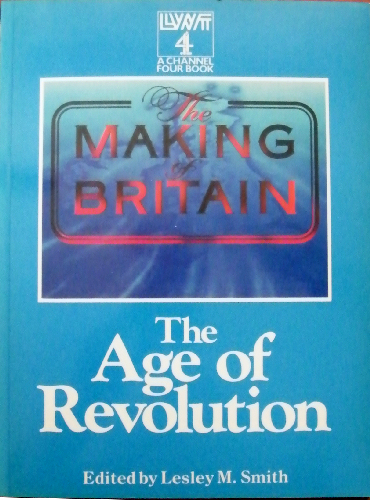Nonfiction Book Reviews
- Prince of Pleasure
- My Dear Cassandra
- Mirror of the Graces
- The Complete Servant
- The Regency Road
- Life in Regency and
Early Victorian Times - Regency London
- Regency Gardens
- Beau Brummell
- Age of Revolution
- Caroline & Charlotte
Regency Fiction
Historical Facts

Title: The Making of Britain 4 - The Age of Revolution
Author: Various, see Content below. Edited by Lesley M. Smith
First published 1987 in Great Britain by Macmillan Education Ltd.
ISBN: 0-333-43867-1
196 pages, illustrated throughout with b&w photos and drawings.
Excerpt:
That was a sharp reminder - if one was needed - that not all urban adventures turned out well. The first lesson for newcomers was to keep their wits about them. Hazards were everywhere. Initial impressions of busy town life could be completely overwhelming, producing the 'town shock' that is still felt by some newcomers to this day. Often noted by eighteenth-century visitors was the pace and bustle of it all. People moved around rapidly, and modern studies have interestingly confirmed that, the larger the town, the faster the mean pace of peregrination. In 1771, Smollet again waxed sardonic on the crowds in London, already a great 'world city' and therefor a place of very speedy citizens:
Review
Originally accompanying literature to the London Weekend Television series The Making of Britain, this book is actually a very good introduction to the social structure of late Georgian and early Victorian society. While there are quite a few books depicting the upper class in all their glory, these essays look behind the façade of fashion prints and glossy coffee table books to the underpinnings of society, to the world of the middle class, to the professionals as well as the workers, the criminals and even the destitute. London slums and Manchester cloth mills are discussed alongside political banquettes and military maneuvers; a true cross section of society.
The book consists of a collection of essays by various authors, covering a specific field of research, such as the rise of the Industrial Age, marriage and divorce, politics, crime and punishment etc. Each chapter is heavily footnoted and ends with a suggested reading list. The book is lavishly illustrated with black and white drawing, paintings and old photographs pertaining to the subject. This publication is an excellent springboard for further research. Warmly recommended.
- The Echo of the Tumbril - Michael Broers
- A Question of Machinery - Maxine Berg
- From Tetribution to Reform - Boyd Hilton
- The New Babylon - Penelope J. Corfield
- The Working Classroom - Phillip Gardner
- 'Domestic Harmony, Public Virtue' - Catherine Hall
- The Victorian State: Order or Liberty? - V. A. C. Gatrell
- A Union without Unity - Roy Foster
- The View from the Colonies - David Dabydeen
- A Week at the Seaside - James Walvin
- The Leap in the Dark - Michael Bentley
- The Invetion of the Past - Peter J. Bowler
Notes
Notes on Contributors
Index
Content:
List of IllustrationsAcknowledgements
Preface
Introduction - Lesley M. Smith